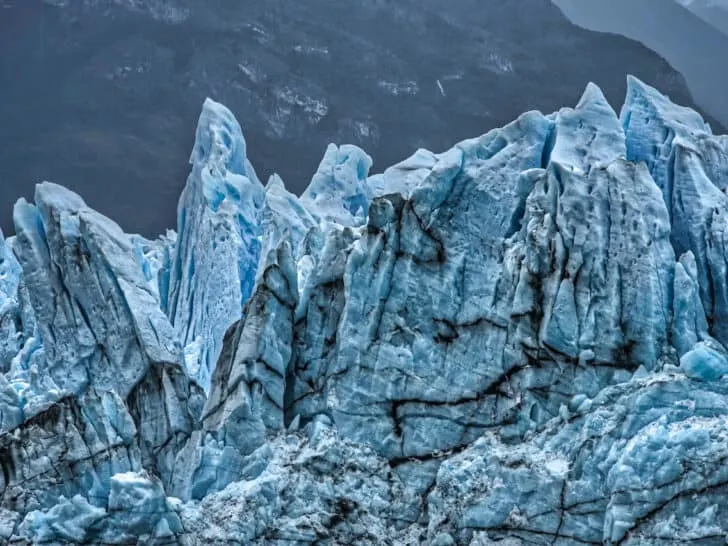Planning your first trip to South America can feel exciting and a little overwhelming. With so many countries, cultures, and landmarks to explore, knowing where to start is the real challenge. That’s why we’ve put together this simple step-by-step itinerary guide to help you travel with confidence. From lively cities and famous wonders to beautiful beaches and hidden gems, you’ll discover the best way to enjoy every moment of your journey.
Whether you love adventure, history, or food, South America has something incredible waiting for you. Follow along, make smart choices, and get ready for an unforgettable adventure!
Getting Your Ducks in a Row Before You Leave
Here’s the truth: sorting logistics before you hop on that plane saves you cash and prevents those “why didn’t I think of this?” moments later. Timing matters big time. Peru and Ecuador? Hit them May through September during the dry season. Patagonia? You’re looking at December to February, any other time and the weather might completely wreck your plans.
Chile stretches dramatically along South America’s western edge, from the arid Atacama Desert in the north to the icy fjords of Patagonia in the south. For first-time travelers planning a South American adventure, Chile offers an ideal starting point. It’s safe, organized, and filled with diverse landscapes that capture the continent’s spirit in one narrow strip of land.
Whether you’re exploring Santiago’s urban energy, hiking Torres del Paine, or tasting wines in the Central Valley, staying connected is key to navigating smoothly. That’s where a travel eSIM for Chile comes in handy, offering reliable coverage and instant connectivity as you move from city to wilderness without worrying about swapping physical SIM cards or roaming charges.
Paperwork Nobody Wants to Think About
Most US, Canadian, and EU passport holders get 90 days stamped at arrival for basically every country down there. Make sure your passport doesn’t expire within six months of your return date. Brazil throws a curveball with advance visa requirements for certain nationalities, so do your homework on this one.
Health Stuff You Actually Need
Yellow fever shots aren’t optional if you’re hitting Amazon regions or crossing specific borders. Schedule that travel clinic visit 8-12 weeks out for hepatitis A, typhoid, and whatever else needs updating. Heading to high altitude spots like Cusco or La Paz? Pack altitude meds. Your head will thank you when you’re gasping at 11,000 feet.
The Three-Week Route That Actually Works
Okay, groundwork done. Let’s build a South America travel itinerary that hits the highlights without turning into an exhausting airport marathon.
Week 1: Peru’s Incredible Ancient Sites
Land in Lima. Give yourself two days to gorge on world-class food and soak up coastal vibes before flying to Cusco. Here’s the thing, you need 2-3 days just sitting around at 11,150 feet letting your body adjust. Altitude sickness doesn’t care how fit you are. Explore Sacred Valley ruins, then tackle Machu Picchu around day seven. Sunrise there? Absolutely worth the brutal early wake-up.
Week 2: Bolivia’s Weird and Wonderful Landscapes
Bus or fly to La Paz, the world’s highest capital at nearly 12,000 feet. Two days exploring Moon Valley and those absolutely wild markets, then day-trip out to Lake Titicaca’s floating islands. But the real showstopper? Three-day jeep tour through Uyuni Salt Flats. You’ll sleep in basic accommodations surrounded by landscapes that look photoshopped but aren’t.
Week 3: Argentina’s Wild Variety
Buenos Aires needs three full days minimum. Tango shows, ridiculous steak dinners, and architecture that feels more European than South American. Back in 2022, 1.5 million international tourists came through the airport, making it South America’s most polished urban destination. Fly south to El Calafate for Perito Moreno Glacier views, then either Mendoza wine country or detour to Iguazu Falls.
Different Strokes for Different Folks
That Peru-Bolivia-Argentina loop works great, but maybe you’re after something else entirely.
Sun, Sand, and Culture
Brazil-focused trips are different if beaches and urban energy are your thing. Four days in Rio, surf time in Florianópolis, São Paulo’s art scene, then Salvador for Afro-Brazilian culture and music. Give yourself at least two weeks or you’ll just feel perpetually rushed.
For the Adrenaline Junkies
Adventure seekers should zero in on Patagonia’s Torres del Paine for multi-day treks, Bariloche for skiing or lake sports, and Bolivia’s Death Road for genuinely sketchy mountain biking. In 2024, the 25-45 age bracket snagged over 50% of extreme tourism market share, proving tons of people want that heart-pounding rush.
What Each Country Actually Brings to the Table
Peru isn’t just Machu Picchu, check out Rainbow Mountain’s crazy striped peaks, Arequipa’s colonial architecture, and beaches near Máncora. Chile runs from Atacama Desert’s stargazing to Patagonia’s granite towers, with funky Valparaíso somewhere in between. Colombia’s having a serious moment right now, Cartagena’s Caribbean colonial magic, Medellín’s comeback story, Tayrona’s jungle-meets-beach situation.
Ecuador packs insane diversity into a tiny space. Hit Quito’s historic quarter, Baños adventure sports, and indigenous markets, all doable in under two weeks. Galápagos needs separate planning and a fatter wallet, though.
Where to Sleep and Staying Safe
Hostels dominate the budget scene, with chains like Selina offering private rooms if you want a social atmosphere minus dorm snoring. Book ahead during peak months (December-February, July-August) for popular spots like Torres del Paine or beachfront places.
Safety gets blown out of proportion online, but basic street smarts apply. Chile, Argentina, and Uruguay feel comparable to Europe safety-wise. Keep valuables hidden, use official taxis, and research neighborhoods before booking. Solo female travelers handle South America fine by trusting gut feelings and joining group tours for certain segments.
Wrapping This Up
Look, building the perfect South America travel itinerary doesn’t mean spending months obsessing over every detail, just solid planning around the best places to visit in South America that match what you’re into. Whether you’re hunting archaeological treasures in Peru, wildlife in Ecuador, or dramatic landscapes in Patagonia, this continent rewards travelers who stay flexible and mix bucket-list highlights with spontaneous discoveries.
Pick one well-thought-out route, build in buffer days for inevitable delays, and accept that you can’t possibly see everything in one go. That just means you’ve got the perfect excuse to come back and explore more of this ridiculously fascinating continent later.
FAQs
Do I really need Spanish?
You’ll survive with translation apps and basics in tourist zones, but learning 30-50 key words makes everything way better, especially in smaller towns. Brazil only speaks Portuguese, so download Google Translate’s offline pack.
Can I hit multiple countries in three weeks without losing my mind?
Yeah, stick to 3-4 countries max and accept you can’t see everything. That Peru-Bolivia-Argentina route works because the geography makes sense. Don’t try cramming Brazil or Colombia into this circuit unless you’re extending to 4-5 weeks minimum.
Should I book accommodations ahead or wing it?
Book your first night arriving anywhere new to avoid stressed-out scrambling, plus anything during peak season or remote areas like Patagonia. Off-season in smaller towns? Walk-in flexibility works fine, though popular hostels fill up fast regardless.




